Mike Willis, his wife Judy, and stepson Wesley know that farming is not for the faint of heart.
Faith Schweikert
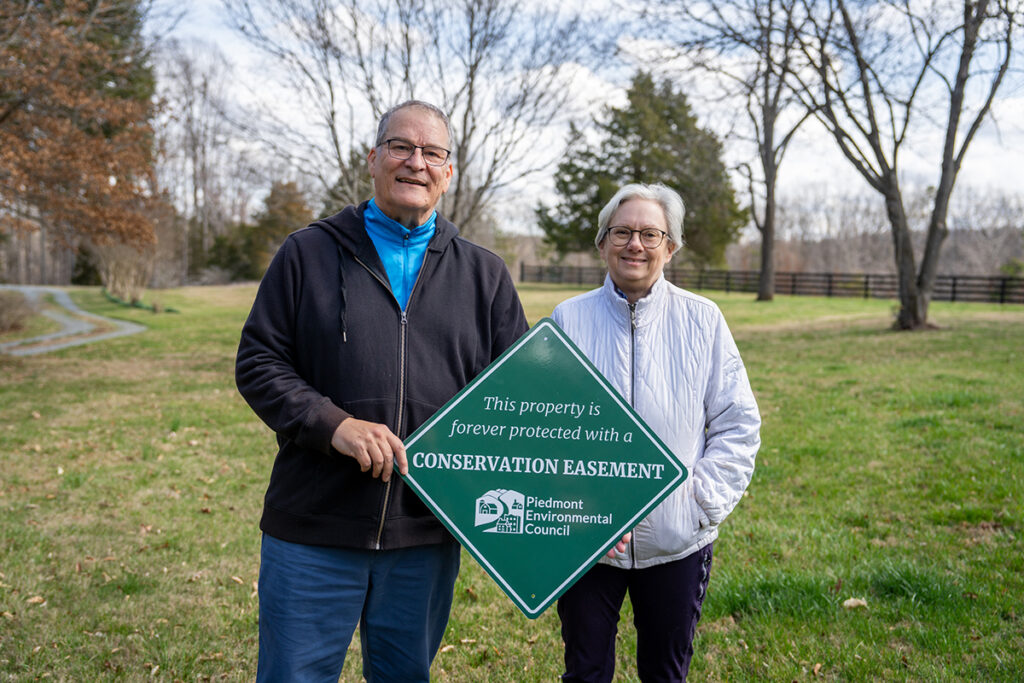
Partnership for the Ages
The Hellmanns are glad to know that their corner of the world will remain intact — a place where generations to come can enjoy the native wildflowers alongside Bear Trail, the hardwoods they plan to plant after the next pine harvest, and the great place to live that they have always loved by the creek.
Spring Updates From Albemarle and Charlottesville
PEC has been working to support conservation programs, engage with AC44 in Phase 3 and make the most of Bike Month this spring.
Strengthening Albemarle County’s Land Conservation Programs: Policy Platform
What are the County’s Land Conservation Programs?
The Albemarle County Easement Authority (ACEA) is a public body that holds open-space easements. An open-space (or conservation) easement is a voluntary legal agreement that limits development of rural land and permanently protects its natural and cultural resources.
The Acquisition of Conservation Easements (ACE) program is a purchase of development rights (PDR) program designed to provide a financial incentive for landowners of modest means to protect their farmland from future development.
What have the land conservation programs accomplished?
Key accomplishments of both the County’s land conservation programs as of 2023 include:
- Protecting over 31,000 acres of land and water in the Rural Area, including:
- >12,700 acres located within designated Water Supply Protection Areas;
- >21,000 acres of important agricultural soils;
- >5,300 acres within designated Mountain Protection Areas; and
- >8,800 acres within designated Rural Historic Districts.
- Eliminating the potential for over 2,100 Rural Area dwellings, reducing sprawl by directing future growth to the Development Areas.
Key accomplishments of the ACE program alone include:
- Leveraging over $3,000,000 in state grant funding to protect nearly 10,000 acres of 53 working farms;
- Incorporating a strong focus on equity, by providing financial support to landowners with the greatest need; and
- Protecting important Rural Area resources, including:
- ~5,000 acres of prime farm and forestland;
- 24 miles of buffered streams; and
- 5 miles of frontage on state designated Scenic Byways and county-designated Entrance Corridors.
How do the land conservation programs benefit our community?
Conservation easements provide significant public benefits to our community, including:
- Improving climate resiliency by retaining forest and farmland, helping to maintain carbon sequestration capability and mitigate the impacts of major flood events;
- Ensuring the quality and quantity of water resources for drinking, recreation, and habitat;
- Protecting public health and minimizing climate impacts from vehicle congestion and emissions associated with sprawl;
- Enhancing biodiversity conservation, by protecting natural habitat and ecological connectivity across the landscape;
- Supporting our local economy through production of local farm and forest products and tourism that relies on maintaining scenic and historic viewsheds; and
- Reducing expenditure of public funds by minimizing the demand for suburban infrastructure and services in the Rural Area.1
Direct support for conservation, such as through Albemarle’s purchase of development rights (PDR) Program, also provides a return on investment to our community. An economic analysis of the return on investment in land conservation in Virginia found that every public $1 invested in land conservation returned $4 in natural goods and services. 2 These dollars also support key industries that depend on the availability of high-quality land and water.
A recent summary by PEC of Albemarle County Community Surveys3 shows that the public recognizes these benefits and has expressed strong support and a commitment to land conservation, consistently identifying it as a priority over the past 30 years, including in the most recent AC44 survey from 2022.
A commitment to land conservation in Albemarle County, Timeline of survey attitudes from 1994-2022
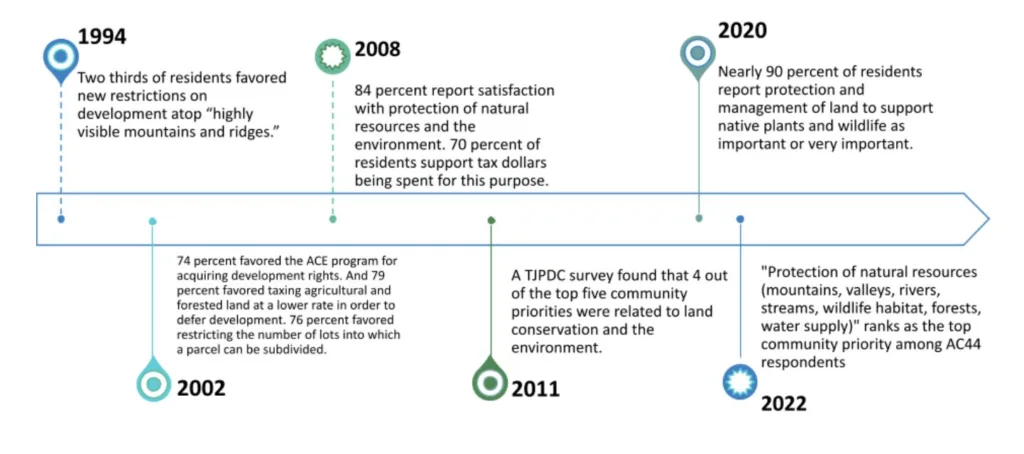
How does land conservation advance the County’s goals and priorities?
Land conservation programs directly support many of the County’s longstanding policies, goals, and priorities and are specifically recognized as an important tool in the County’s Comprehensive Plan, Biodiversity Action Plan, and Climate Action Plan. They are also essential for achieving the current vision of Albemarle as a ‘Green and Resilient Community’, one of the four major elements of the new Framework for an Equitable and Resilient Future guiding the AC44 Comprehensive Plan update.
The County’s current Comprehensive Plan, adopted in 2015, begins with its commitment to the overarching Growth Management Policy, which ‘directs development into specific, identified areas for vibrant growth while conserving the remainder of the County for rural uses, such as agriculture, forestry, and resource protection.’ The proposed AC44 update to the Growth Management Policy continues to support this approach, and states that “The Development Areas and the Rural Area will have distinct boundaries, without low-density transition areas”.
The current Comprehensive Plan also emphasizes protection of the Rural Area. The central goal of the Rural Area chapter states “Albemarle’s Rural Area will have thriving farms and forests, traditional crossroads communities, protected scenic areas, historic sites, and preserved natural resources.”
To achieve this goal, the Rural Area chapter includes numerous objectives and strategies, many of which the land conservation programs directly help accomplish. Included among these are several strategies directly related to maintaining and increasing support for the County’s own land conservation programs:
- Strategy 2b: Provide information to property owners in the Rural Area on alternatives to subdividing their land, including donating conservation easements and use value taxation.
- Strategy 2d: Continue to promote conservation easements to provide a financially attractive way for landowners to protect family farms in Albemarle County and their unique open space resources, to provide an opportunity for landowners to voluntarily sell a conservation easement to a public agency to be held in trust for perpetuity, and to preserve important features of the Rural Area for all.
- Strategy 2e: Strengthen the Acquisition of Conservation Easements (ACE) Program by providing a stable dedicated funding source and staff resources for administering the program.
- Strategy 2f: Continue to provide staff support to the Public Recreational Facility Authority (PRFA). (*renamed Albemarle County Easement Authority – ACEA)
The Natural Resources and Historic, Cultural, and Scenic Resources chapters also include numerous goals, objectives, and strategies related to the protection of water resources, riparian areas, biological diversity and ecological integrity, scenic resources, dark skies, and building climate resiliency, including:
- Strategy 5d: Encourage voluntary measures, such as conservation easements, agricultural and forestal districts, and use value taxation to protect mountain resources.
- Strategy 2a: Encourage landowners to pursue voluntary methods of preservation and conservation, including requesting landmark and district designations, offering conservation easements, and providing tax and other financial incentive programs, as outlined in the adopted 2000 Historic Preservation Plan and its updates.
The Climate Action Plan (CAP) and Biodiversity Action Plan (BAP) also include direct recommendations to increase land protection in the Rural Area through the County’s land conservation programs:
- L.1.1. Maintain and increase the County’s land-conservation programs and related efforts, with a focus on keeping large forested properties intact and in forested land cover, to protect and increase carbon sequestration, as well as to protect water quality and habitat. (CAP, noted as immediately actionable)
- L.1.13. Incentivize and support the protection, enhancement, and restoration of vegetated riparian buffers and wildlife habitat corridors for multiple benefits, including carbon sequestration. (CAP, noted as immediately actionable)
- GOAL 2: Promote conservation easements for areas of important biological resources or physical landscape conditions. (BAP)
- Recommendation 2.1. Promote the county’s ACE and PRFA conservation easement programs. Promote and support conservation easement programs of other organizations. (BAP)
The AC44 Comprehensive Plan update has several related draft goals and objectives for the Rural Area and Environmental Stewardship, all of which rely on the County’s land conservation programs for successful implementation:
- Rural Area Goal 1: Albemarle’s Rural Area will have thriving farms and working forests, traditional crossroads communities, and protected scenic areas, historic sites and districts, and natural systems, with a land-use pattern based on large parcels that are suitably sized for agricultural and silvicultural production and unfragmented habitats.
- Objective 1.1: Reduce the rate of conversion of Rural Area land to residential uses and mitigate the impacts to natural systems from the residential development that does occur.
- Objective 1.2: Improve the effectiveness of the County’s land-conservation programs in implementing Rural Area and Environmental Stewardship Comprehensive Plan objectives.
- Rural Area Goal 2: Albemarle County will have a strong agricultural and silvicultural economy in the Rural Area.
- Objective 2.2: Protect important soils for agriculture and forestry.
- Environmental Stewardship Goal 3: Albemarle County will have natural waters – including rivers, streams, wetlands, and groundwater – and riparian areas that are healthy, plentiful, diverse, and resilient and are able to provide the community with many benefits.
- Objective 3.1: Enhance protections and advance restoration practices for wetlands, streams, floodplains, and forested riparian buffers.
- Objective 3.2: Protect natural waters, stream channels, and riparian areas from unmanaged stormwater and other sources of pollution.
- Objective 3.3: Protect the quality and quantity of groundwater supplies throughout the county
- Environmental Stewardship Goal 4: Albemarle County will achieve better local biological diversity, ecological integrity, and ecosystem resilience, including by implementing the Biodiversity Action Plan.
- Objective 4.1: Protect and improve the network of native habitat blocks in the county, including forests, rock barrens, grasslands, and wetlands. The basis of this network is a pattern of large, well-connected forest blocks (with significant interior-forest area) that includes other types of native habitat patches.
- Objective 4.2: Conserve and restore forested habitat corridors and riparian buffers in the county, and remove barriers to wildlife movement, to improve habitat connectivity and to provide resilience for ecosystems and species affected by climate change.
- Objective 4.3: Protect and restore the quality and connectivity of river and stream habitats, and of wetlands, in the county. Restore more natural floodplain topography for both habitat improvement and flood-control benefits.
- Objective 4.4: Use land conservation tools to direct development away from priority areas identified in the Biodiversity Action Plan and from the Mountain Protection Areas, and to require appropriate management of important habitat areas that are protected by conservation easements.
Opportunities & Action Steps
Establish stability and consistency in the local land conservation programs.
Prior to the recession in 2008, the ACE program received annual funding from the General Funds and Tourism Funds. Post-recession reduction or elimination of these funds significantly reduced the program’s ability to acquire easements.8 During the COVID-19 pandemic, resources allocated to the ACE program were redirected and have not yet been restored. Staff capacity for both land conservation programs has consistently been limited and is particularly low now that the ACE program is unstaffed. This instability and general uncertainty about the program has resulted in missed opportunities. Establishing a consistent and dedicated funding source for the County’s land conservation programs would provide confidence for landowners to participate in the program and would greatly increase their effectiveness in addressing the County’s policy priorities.
Leverage state and federal funding to accelerate conservation and bring resources to our community.
State funding is available to support PDR programs through the Virginia Department of Agricultural and Consumer Services and for specific projects through the Virginia Outdoors Foundation and the Virginia Land Conservation Foundation, which has grown since the County initiated its programs. Numerous federal funding opportunities are also currently available for land conservation. To date, the ACE program has leveraged over $3,000,000 in state grant funding. However, without a PDR program in place, Albemarle County is currently not utilizing opportunities to leverage resources for conservation.
Improve the County’s fiscal health by increasing land conservation efforts in the Rural Area.
Numerous studies in Virginia show that land conservation has positive impacts on a locality’s fiscal health by reducing costs on infrastructure and other municipal services required by residential property owners.1,2, 4, 5,6 Research conducted in six Virginia counties shows that on average, residential lands require $1.18 in services for every $1.00 paid in local taxes. At the same time, working and open lands only require $0.35 in services for every dollar contributed in property taxes.1
Conservation easements, by lowering land values, also reduce a locality’s composite index, increasing the amount of state funding for education.5,7
Conservation easements do qualify land for a lower tax rate. However, most rural properties in agriculture and forestal uses are already enrolled in the use-value assessment program, so adding additional conservation easements will not significantly lower Albemarle’s tax revenue.
Achieve local goals and priorities by enhancing local conservation programs.
Other state and nonprofit land conservation programs do operate in Albemarle County, but they have limited capacity and/or tend to focus efforts on statewide priorities. A local program focused on local priorities is essential to accelerate the pace of land conservation in Albemarle County, and to focus those efforts on Albemarle’s goals as identified in the Comprehensive Plan, such as biodiversity conservation, climate action, and water resource protection, as well as continuing to ensure the focus on equity that has long been employed by the ACE program.
To act on these opportunities, PEC recommends the following action steps:
1. Restore the County’s purchase of development rights (PDR) Program. Establish a stable and dedicated funding source and allocate permanent staff resources for the program.
2. In addition to a dedicated funding source for the PDR program, establish an Albemarle Conservation Fund. The fund should be structured to receive payments from other sources, similar to the Conservation Easement Program Fund recently established by Culpeper County. This would allow Albemarle’s conservation programs the flexibility to receive additional support through other channels, including through siting agreements and mitigation payments to offset unavoidable impacts of major land use projects and loss of forest and farmland in the Rural Area.
3. Reestablish the County’s PDR Program with a newly updated approach, continuing to focus on farmland preservation, while also incorporating updates to better address the County’s goals for climate, biodiversity, and stream health, with a continued emphasis on equity.
4. Implement the two land conservation proposals designed as part of the Stream Health Initiative, both of which were endorsed by the BOS in a work session on December 1, 2021. These are proposal #6 (Land Conservation for Water Quality) and proposal #7 (Riparian Conservation Assistance Program).
Citations
- American Farmland Trust, Farmland Information Center. 2016. Fact Sheet: Cost of Community Services Studies. Washington D.C.
- Trust for Public Land. 2016. Virginia’s Return on Investment in Land Conservation. Accessed February 21, 2024. tpl.org
- Piedmont Environmental Council. 2023. Community Surveys in Albemarle County: Perspectives on Planning, Preservation, and Natural Resources from 1994 to 2023. Charlottesville, Virginia.
- Clower, Terry L., PhD and Dean D. Bellas, PhD. 2017. Socioeconomic impacts of conserved land on Virginia’s Eastern Shore. Report prepared for Virginia Coastal Zone Management Program (VZCMP) and Virginia Department of Environmental Quality (DEQ). Richmond, Virginia.
- Middle Peninsula Planning District Commission. 2010. Conservation Easements: Fiscal Impacts to Localities in the Middle Peninsula. Report prepared for Virginia Coastal Zone Management Program (VZCMP) and Virginia Department of Environmental Quality (DEQ). Richmond, Virginia.
- Rephan, Terance J. 2018. Clarke County, Virginia Cost of Community Services Study. Weldon Cooper Center for Public Service. University of Virginia, Charlottesville, Virginia.
- Piedmont Environmental Council. 2022. Impact of Land Under Conservation Easement on the Local Composite Index in Albemarle County. Charlottesville, Virginia.
- Albemarle County. 2021. Albemarle County’s Conservation Easement Programs. Presentation to the Albemarle Board of Supervisors on September 15, 2021.
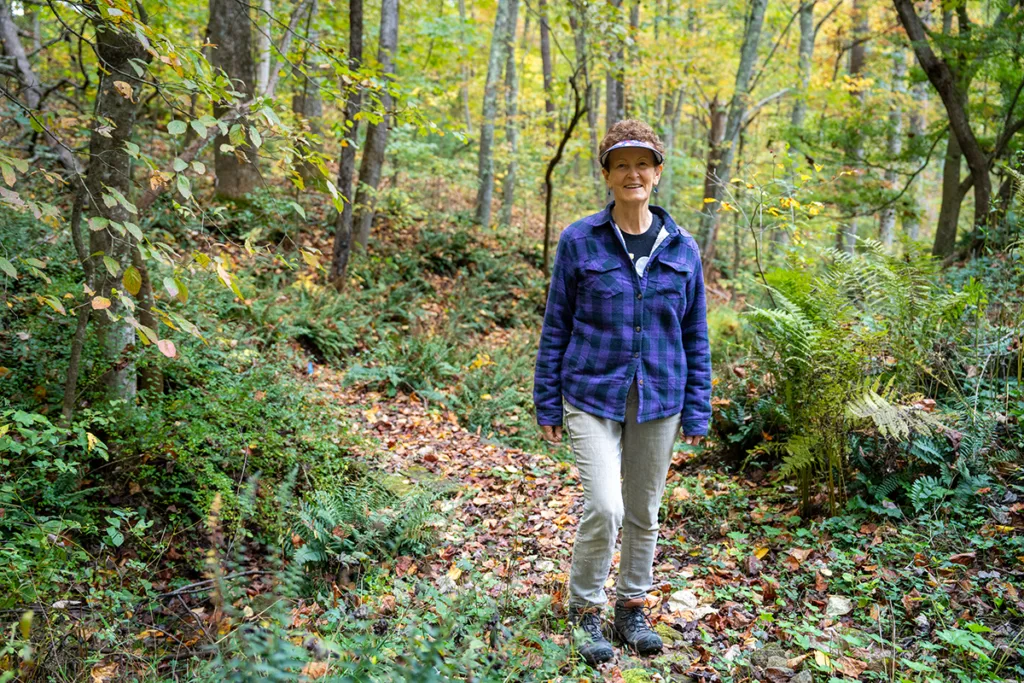
A Conservation Journey in Madison County
Carolyn Smith’s Madison County property has been on quite the journey since her parents first purchased the former cattle operation in 1965. Donating a 129-acre conservation easement in late 2023 came on the heels of decades of successful land stewardship by Carolyn, her parents, and a community of partners who have worked to restore and repair the land for wildlife habitat, pollinators and native plants.
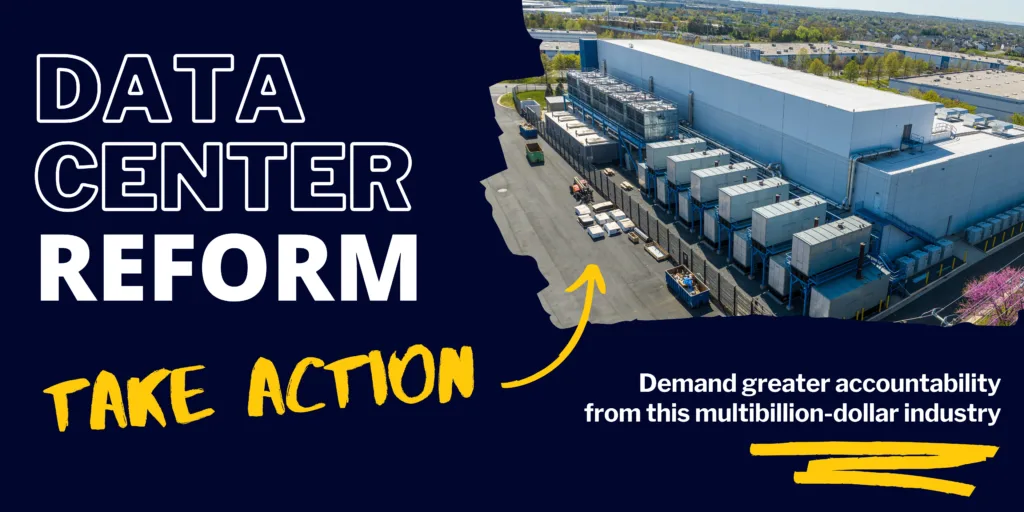
Join Us for a Community Meeting in Charlottesville
The following text was sent out via email on January 24, 2023. Sign up for PEC email alerts →
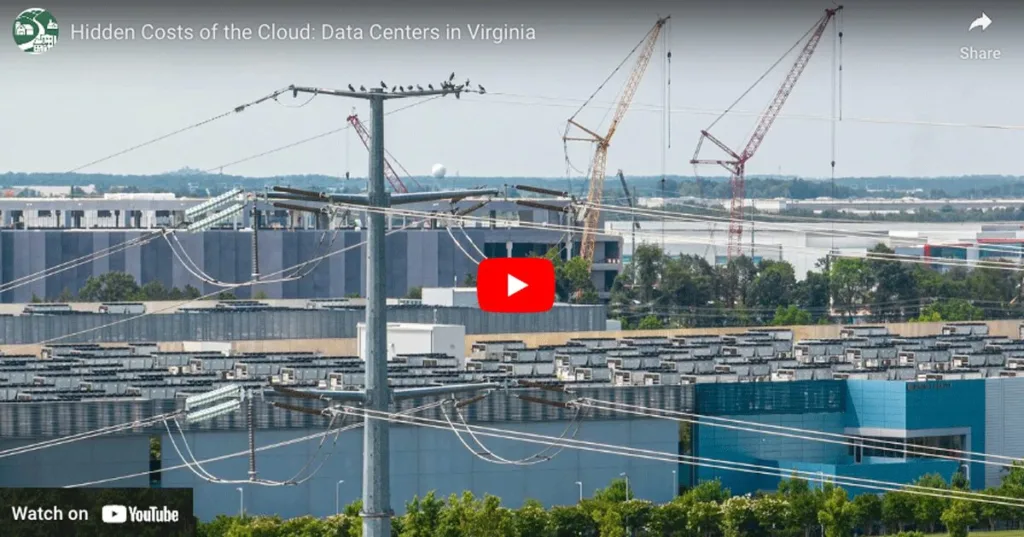
Dear Supporter,
You might have heard some of the recent buzz about data centers and surging electricity demand. We invite you to attend a community meeting to talk about potential impacts on our community and on the state’s ability to meet its climate goals Tuesday, February 6 at 6:30 p.m. at the Jefferson School African American Heritage Center in Charlottesville, Va.
The explosive growth of this energy-intensive sector, the only growing sector of electricity demand in Virginia, is requiring historic expansions of our energy grid and will thwart our ability to get off of fossil fuels – all of which will likely be funded by Virginia ratepayers like yourself.
We’ll also share what we’ve learned about the potential for new transmission line projects proposed in our area, especially the proposed “wreck and rebuild” expanded transmission line through Albemarle and Charlottesville (mapped below), as well as new power generation – and prolongation of dirty legacy sources – to supply the projected demand.
This sweeping project will cross through and impact scores of community neighborhoods and schools from Gordonsville and Charlottesville to Crozet and Waynesboro, parcels of permanently conserved land, the Historic Southwest Mountains, the Historic Greenwood-Afton area, Shenandoah National Park and Skyline Drive, several Albemarle County parks including McIntire and Darden Towe Parks, and the treasured views of the mountains throughout.
The unprecedented development proposed for our state will erase hard-won conservation and climate gains in Virginia, on top of the local impacts. We are working to develop solutions to this new challenge for Albemarle and beyond.
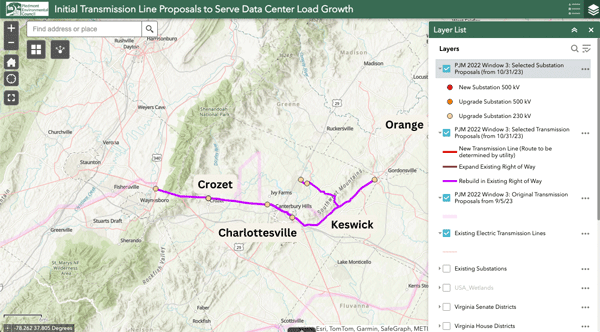
Space is limited, so please register in advance for this significant and timely conversation. I hope to see you there!
All the best,
Faith Schweikert
Communications & Policy Fellow
[email protected]
(434) 977-2033 x7026
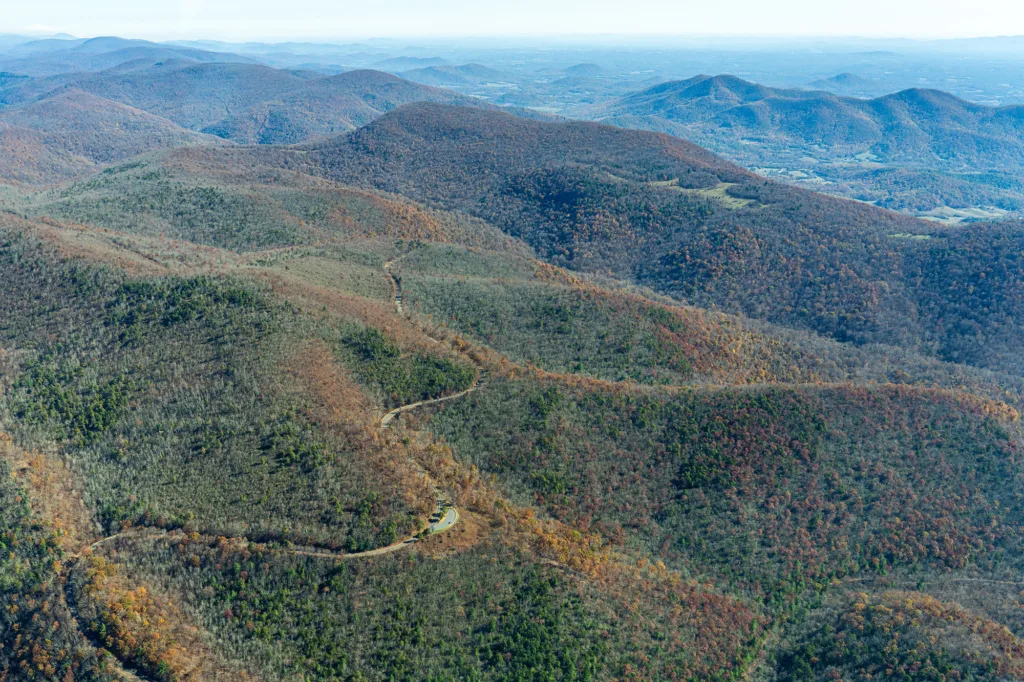
Winter Updates from Albemarle & Charlottesville
The following text was sent out via email on December 20, 2023. Sign up for PEC email alerts →

Dear Supporter,
We hope you will soon be logging off and, like the black bears and chipmunks, taking a winter reprieve. Whether you are hibernating at home in the Piedmont or migrating south or somewhere else for the winter, we wish you a happy holiday season.
Before you go, we’re happy to share with you a few major conservation, land use, and trails updates worth celebrating, plus some impactful projects we’ll be focused on in 2024 and beyond. We hope you’ll support our efforts in the new year by becoming a member as we continue to work towards our mission of protecting and restoring the lands and waters of the Virginia Piedmont, while building stronger, more sustainable communities.
Protecting the Southern Shenandoah Borderlands

For the past several years, we’ve been developing a landscape-scale forestland conservation project by working with multiple landowners adjacent to Shenandoah National Park in Albemarle County. This spring, that project was awarded grant funds through the federal Forest Legacy Program, which will help us permanently protect over 4,300 acres adjacent to the park.
Now, we’re working hard to take the project a step further to conserve more land by applying for a second round of Forest Legacy funding. If the grant is awarded, we can add 767 more acres of permanently protected forestland along this boundary of Shenandoah National Park, bringing the total to over 5,000 acres conserved.
This work to expand the landscape of protected lands in the Appalachian corridor is a national and global conservation priority, with implications for climate resiliency, watershed protection, biodiversity conservation, and additional scenic and recreational public benefits.
AC44 Continues with Win for the Rural Area
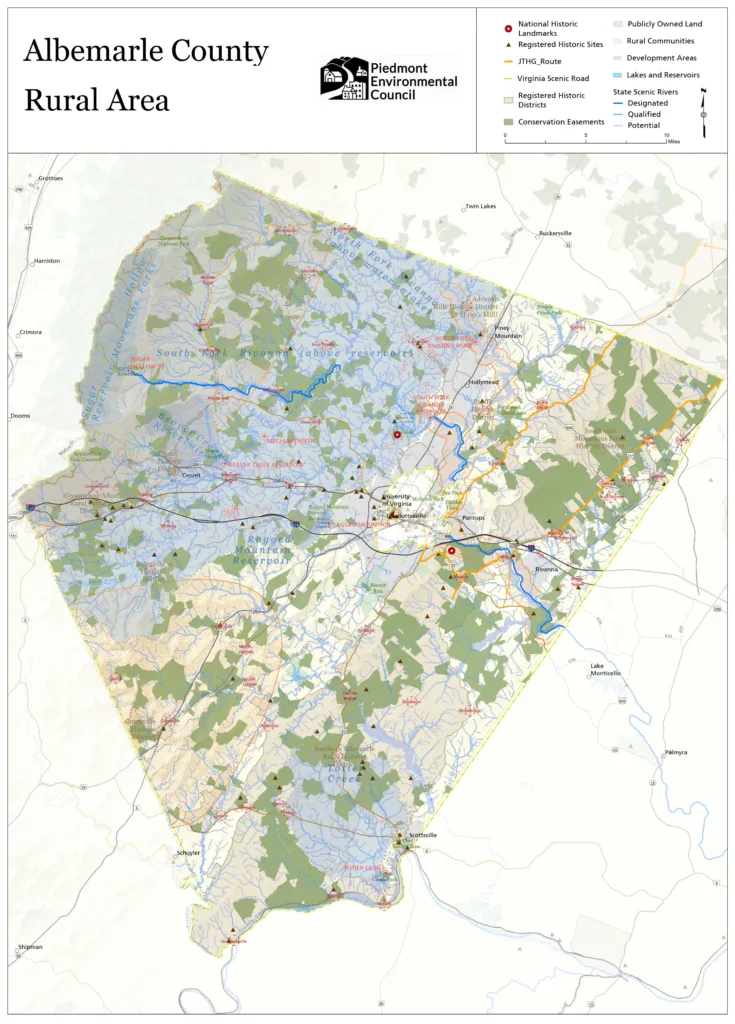
In our last email about Albemarle County’s Comprehensive Plan update, we told you that we are fervently advocating for seven recommendations to be adopted into the current draft. In a major first step, and after a year of effort and community engagement, the County has made a change that aligned with our first recommendation! There will be a dedicated chapter for rural area planning, which brings it in line with widely held public opinion that Albemarle’s agricultural and natural landscapes, as well as the unique rural communities that exist there, are worth conserving.
Three decades of community survey results and recent feedback specifically related to the AC44 Comprehensive Plan have consistently revealed, with great clarity, that a majority of Albemarle residents highly value and want to prioritize the County’s Rural Area.
Planning will continue through 2024, with opportunities for citizens to voice their concerns and opinions throughout. This plan impacts every aspect of life in the County and will serve as the guidelines for decisions that are made about the community in the future. Stay up to date by signing up for AC44 updates.
New Signs Show Fifeville’s Changing Landscape
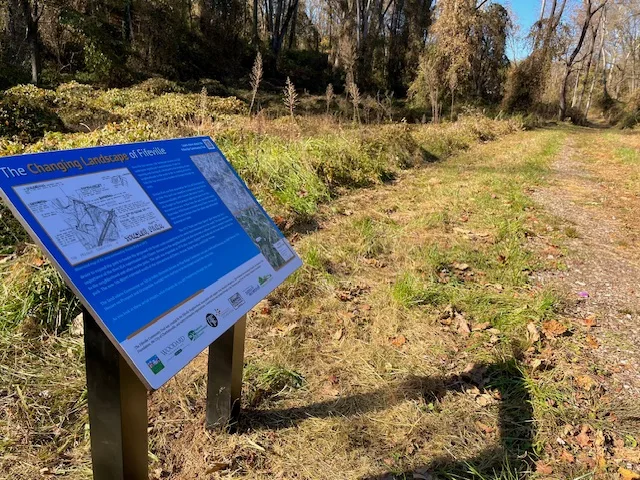
Charlottesville is layered with rich and complicated history. Evidence of ways the landscape has changed is visible along the Fifeville Community Trail, and some of its stories are now highlighted by two new interpretative signs that PEC produced with support from the Virginia Outdoors Foundation. These signs combine our community partners’ careful archival research with resident interviews in a beautiful, easily understood format.
One of the signs reveals that what is now a green oasis was once an industrial operation (a brick manufacture). The other shows how Fifth Street was relocated and enlarged during Urban Renewal. That led to both an expanded park and the loss of several homes. This happened during the lifetime of many area residents and we believe it important that stories like these be memorialized.
The Fifeville Trail is truly the fruit of community leadership — and of their sweat equity. Speaking of which, we hope you’ll join a community work party, led by the Rivanna Trails Foundation and PEC, to maintain and improve the trail on Saturday, Jan. 13 at 9 a.m. at Tonsler Park.
Looking Ahead to 2024
PEC is vigilantly looking toward the future in our work, in preserving the land, the intentional planning of towns and communities, and using our knowledge of land use and environmental threats within our region to anticipate what lies ahead locally, in our nine-county service area, and in other regions of the Commonwealth.
Data Centers
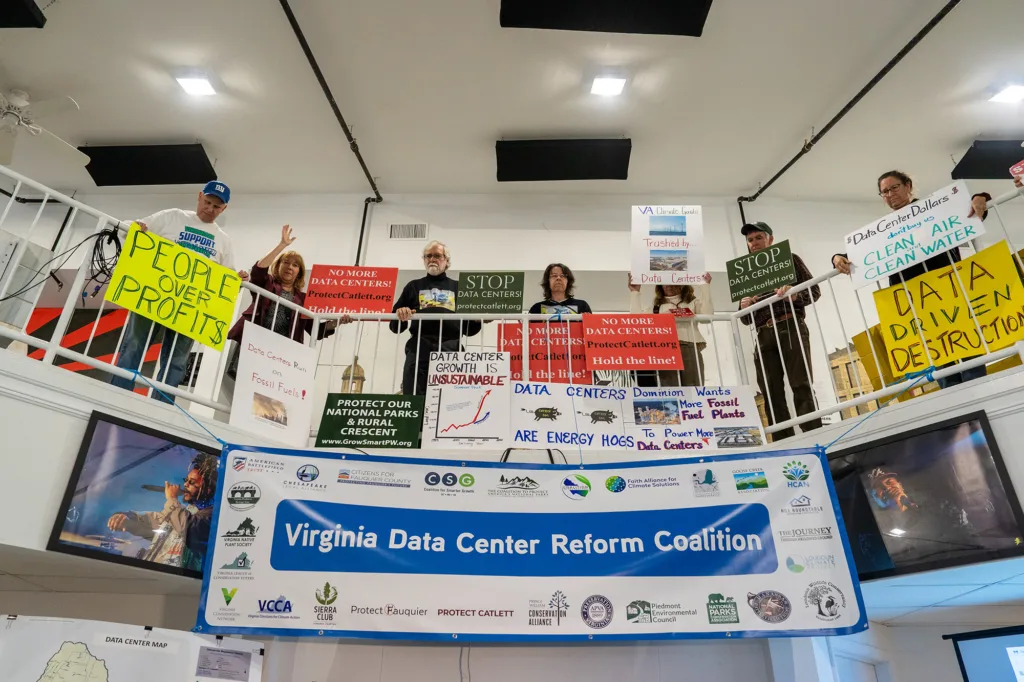
In the Virginia Piedmont, one looming threat is the proliferation of data centers — the physical structures that store the digital world — and the energy infrastructure they will require. The explosive growth of the data center industry represents a major challenge to achieving a clean energy future as they require extraordinary amounts of power and utilize dozens of back up diesel generators per building. The massive buildings and associated electrical infrastructure also place a heavy burden not only on our land, water, and community resources but also will impact the electric bill of Virginia ratepayers as transmission lines and generation facilities are folded into everyone’s bills.
To serve exploding data center demand in Dominion’s utility area, the electrical transmission grid operator, PJM, has moved a plan to expand an existing transmission line running through Albemarle County and Charlottesville forward. Dominion will assess its final engineering and design and then the Virginia State Corporation Commission will likely approve it. In light of this, PEC will be holding a Energy Infrastructure and Data Center Community Meeting to share more about data centers and their impacts on energy demand and land use in late January.
Rivanna Futures
Albemarle County is acquiring 462 acres of land along the east side of Route 29 North adjacent to Rivanna Station, the home of three federal defense intelligence agencies, with the goals of retaining those Department of Defense installations and expanding the private defense sector in the community – called Rivanna Futures.
An initiative with such goals will most certainly have major land use, transportation, and infrastructure implications for the County and its residents, especially for the eight-mile stretch of U.S. 29 going up to the southern edge of Greene County. As we learn more about the Rivanna Futures project, we will continue to update you on ways to advocate for smart growth and resource protections.
Virginia’s Research Triangle
Last but not least, following last week’s groundbreaking for U.Va’s Manning Institute for Biotechnology, Governor Youngkin announced that a network of research institutions will be established between the University in Charlottesville, Virginia Tech’s Fralin Biomedical Research Institute at VTC in Roanoke, and Virginia Commonwealth University’s Medicines for All Institute. The announcement emphasized the desire for increased commercialization between the three cities, similar to North Carolina’s Research Triangle. We’ll be focused on the wider implications for land use, smart growth planning, transportation, infrastructure, and natural resources in our community in the coming months and years.
Contributions like yours make our work in Albemarle and Charlottesville possible. Give the gift of membership this holiday season, become a monthly sustaining member or donate today to support the protection, restoration, and planning work of our locally-based staff.
Thank you! Until next year,
Faith Schweikert
Communications & Policy Fellow
[email protected]
(434) 977-2033 x7026
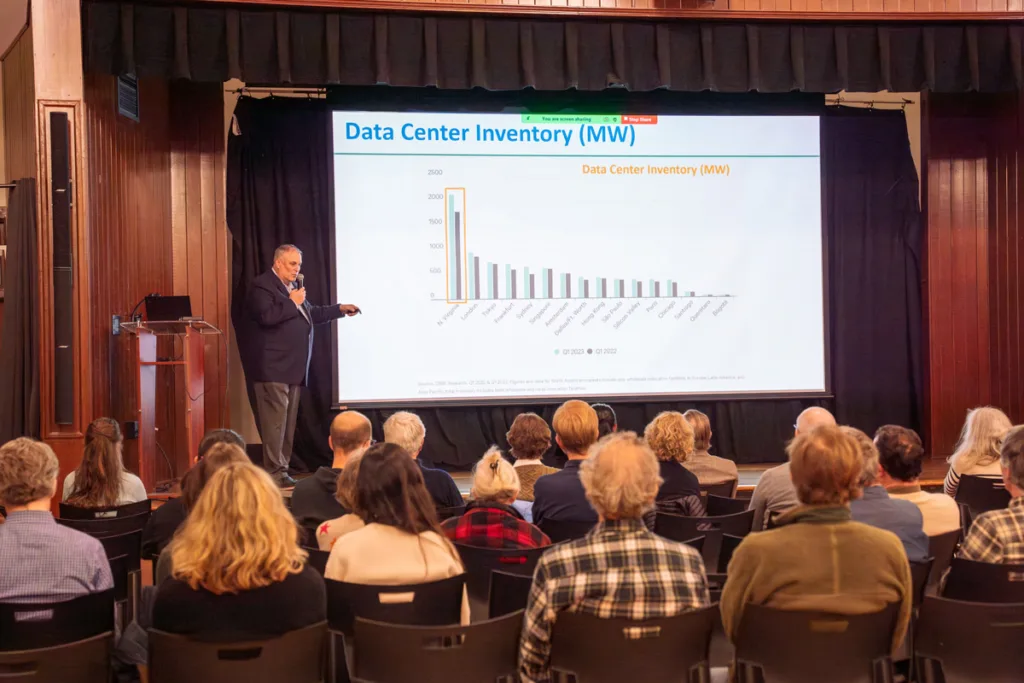
Resources from the Charlottesville Community Meeting on Energy Infrastructure and Data Centers – Feb. 6, 2024
On Tuesday, Feb. 6, we hosted a community meeting on data centers and energy infrastructure in Charlottesville at the Jefferson School African American Heritage Center.
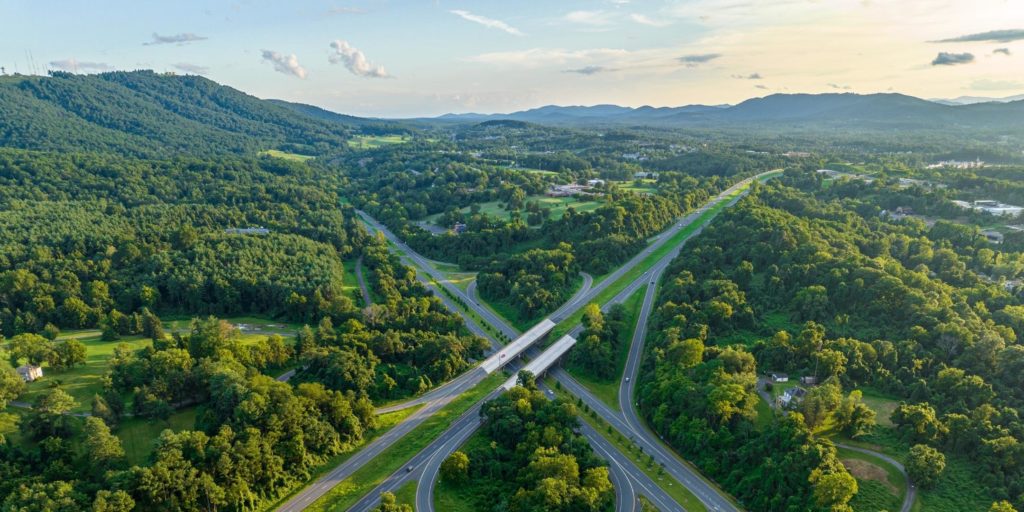
It’s a Critical Time to Engage in the Albemarle Comprehensive Plan Update Process
Natural spaces and sustainable communities only exist through deliberate efforts to plan for and protect them.
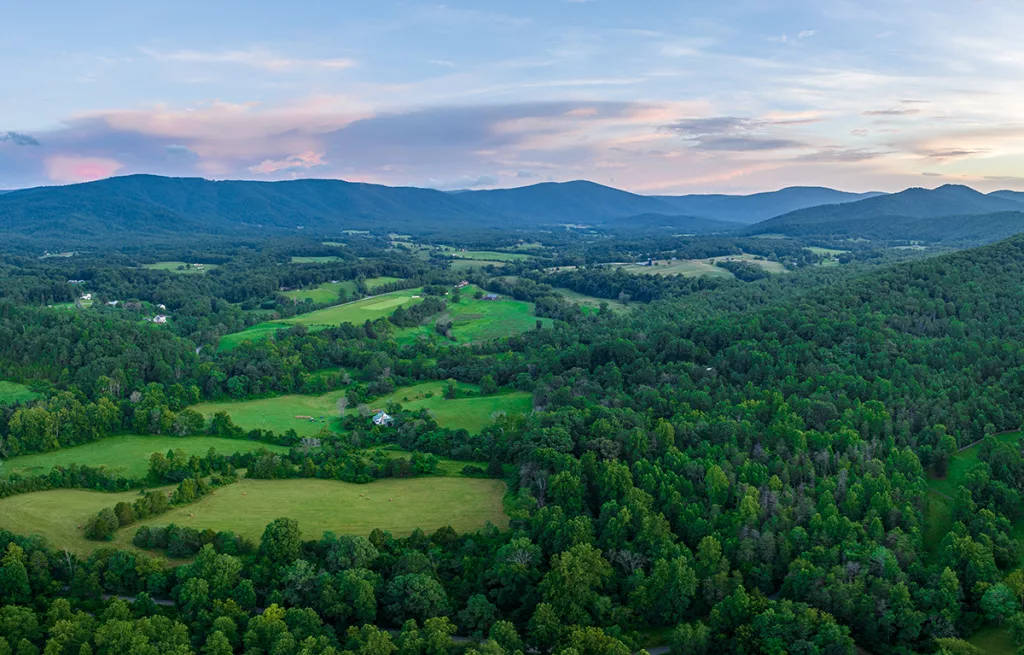
Albemarle County AC44 Comprehensive Plan Policy Platform: Suggested Talking Points | 27 Oct. 2023
Contact: Rob McGinnis – [email protected], (434) 962-9110
The AC44 Comprehensive Plan update will serve as a guiding document for Albemarle County for the years 2024-2044. It will define the County’s priorities for protecting and enhancing natural and historic resources, providing housing and transportation options, supporting the local economy, and much more. As such, it will have a significant impact on residents’ daily lives and the future of their communities. The County has committed to equity and climate action, goals The Piedmont Environmental Council (PEC) broadly supports and hopes will be fully and intentionally integrated into this Comprehensive Plan. The following are PEC’s current priority policy recommendations for the update.
1. Include a Rural Area chapter.
Three decades of community survey results and recent feedback from public engagement specifically related to the AC44 Comprehensive Plan have consistently revealed, with great clarity, that a majority of County residents understand and want to prioritize the County’s Rural Area. The County has done this in the past two comprehensive plans with the inclusion of a Rural Area chapter, and should do so again in this update. A separate chapter is required to address the complex interrelationships of natural and cultural resources unique to Albemarle’s rural communities.
2. Include a strong recommendation for the creation of a Rural Area Plan.
A Rural Area Plan is a master plan that provides a long-term vision for sustaining working farms and forests, natural resource protection, thriving communities, historic preservation, outdoor recreation, and tourism. It must be comprehensive, include mapping, and be informed by significant public engagement to implement the AC44 Rural Area policies. Intentional planning for the Rural Area can be a strong opportunity to protect all the values of the Rural Area and its communities.
3. Include a recommendation for the establishment of a Development Areas Task Force to address the obstacles to accommodating projected growth in the current Development Areas.
The County should create a task force to seek out and implement proactive solutions to the challenges faced when accommodating projected growth in the current Development Areas. The County must analyze whether the existing Development Areas are achieving a mix of uses, higher density, walkability, redevelopment, accommodation of growth, and accessible quality open spaces before it considers any expansion of those Development Areas.
4. Avoid mapping of future Development Area expansions.
Mapping future expansion of Development Areas is ill-advised and would likely lead to the acceleration of land speculation and its associated negative impacts, such as rising land prices, higher housing costs, and unnecessary expansion of infrastructure and services. There is a real danger that mapping could spur premature expansion by drawing attention away from currently feasible strategies that direct growth into the Development Areas.
5. The proposed future small area plans for the I-64/US250 Yancey and I-64/US250 Shadwell interchanges should be limited to the land areas near the interchanges.
Limiting future small area plan study areas to exclude the US250 corridor west of the Yancey interchange and the US250 corridor east of the Shadwell interchange is necessary to avoid inappropriate development extending into the Rural Area.
6. The Environmental Stewardship chapter should include strong recommendations for a consistent and dedicated funding source for the land conservation and purchase of development rights (PDR) programs.
To protect Albemarle’s water resources and drinking water supplies, as well as the rural areas where they originate, and to support key priorities of biodiversity conservation and climate action, the County must accelerate and increase funding support and staffing capacity for its land conservation and purchase of development rights (PDR) programs.
7. The Historic, Scenic, and Cultural Resources chapter should include strong recommendations for an updated Historic Preservation Plan and a Historic Preservation Ordinance.
The County should pursue proactive measures, programs, and regulations to better protect Albemarle’s historic, scenic, and cultural resources – specifically the cultural landscapes, districts, sites, and buildings that contribute to the rural quality of life and support our local economy.
Ways to Get Involved
- Submit Comments in Writing: Public comments should be sent to the Albemarle County Board of Supervisors at [email protected] and the Planning Commission at [email protected]. Note that when sending an email to the Board of Supervisors, the County Executive is also receiving your email.
- Attend a Work Session or Meeting: Showing up in person demonstrates to elected officials that their citizens are paying attention to the decisions that impact them.
- Speak Up: Citizens can speak for three minutes at the start of every Board of Supervisors and Planning Commission meeting to have their voices heard.
- Stay Informed and Engaged: This is a long process that has the potential to impact every facet of life in Albemarle County for the next 20 years. Sign up for PEC’s AC44 email alerts, the County’s Engage updates, and review PEC’s AC44 Comprehensive Plan Policy Platform and Climate Action Plan at pecva.org/ac44-comp-plan/.


